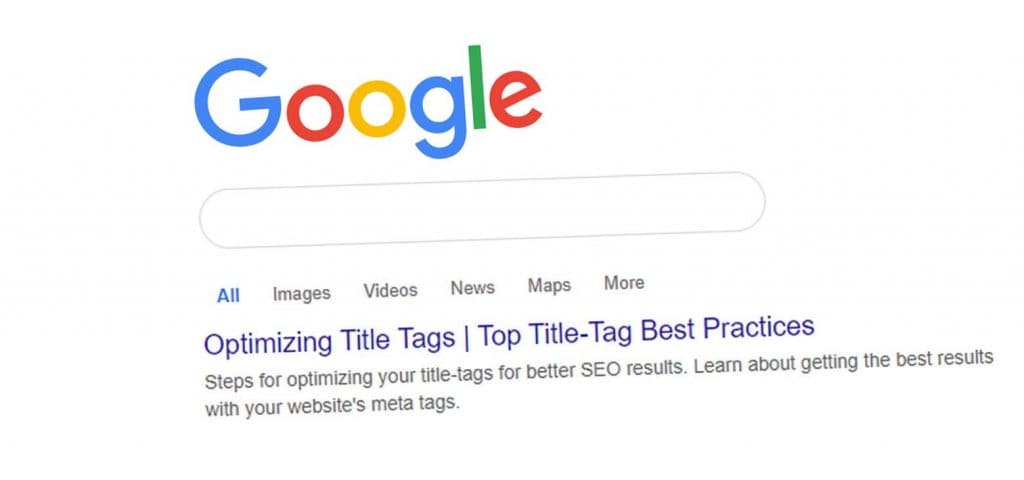How Does Google Define Quality Content
Defining quality content can be tricky. What makes content high-quality and valuable to users isn't always straightforward. However, given Google's dominance as a search engine, its standards for quality content offer helpful guidelines. Google spends massive resources determining metrics and signals to identify content that best serves its users.
According to Google, understanding quality content can help content creators, website owners, SEO specialists, and marketers optimise their efforts. This article outlines Google's critical criteria and best practices for creating content that aligns with its quality standards.
- Google defines quality content as comprehensive, accurate, engaging, and valuable to users.
- Core elements of quality include comprehensiveness, accuracy, readability, uniqueness, and presentation.
- Google's algorithms evaluate content using over 200 ranking factors focusing on expertise and trust.
- High-quality content builds user trust and enhances visibility in search results.
- Optimising for voice search requires conversational tone, brevity, and direct responses to questions.
- Understanding Google's Mission with Search
- Core Elements of Quality According to Google
- Ranking Systems Prioritise Quality
- Differentiating High and Low Quality Pages
- Direct Guidance from Google on Optimising for Quality
- Manual Google Rater Guidelines
- Aligning Quality Standards Across an Entire Site
- Trust and Safety: Vital for Quality According to Google
- Voice Search Requires Relevant, Conversational Content
- The Virtuous Cycle: Quality Content Rewards Users and Google
- Conclusion
- FAQs
Understanding Google's Mission with Search

To understand Google's definition of quality, it helps first to recognise their overall mission with search:
- Provide the most relevant and valuable search results to users
- Organise the world's information and make it accessible
- Focus on the user and their intent – not just keywords
Google's ranking systems aim to satisfy these goals by prominently displaying pages that offer the best experience for searchers. Quality content plays a central role.
As Google has evolved from a simple link-based ranking algorithm to a more semantic and machine learning-focused system, its metrics for assessing content quality have also advanced.
Core Elements of Quality According to Google
Google has not published an “official guide” for assessing content quality. However, analysis of their patents, announcements, help documentation, and leader statements reveal core elements that meet their standards:
Comprehensiveness
- In-depth, thorough information on a topic
- Addresses vital aspects searchers want to know
- Provides extensive coverage of a subject beyond a superficial overview
Accuracy and Reliability
- Factually correct information
- Reputable sources support data, statistics, and factual claims
- Content comes from authoritative sites and subject matter experts.
Readability
- It is written clearly for the average reader to understand
- Appropriate sentence structure and transitions
- Good grammar, spelling, and punctuation
- Scannable with formatted headlines and subheads
Uniqueness and Value
- Original, non-duplicated information
- Offers fresh value for users – not rehashed or spun content
- Provides valuable insights, data points, recommendations, or solutions
Engaging and Appealing Presentation
- Attractive, conversational tone and style
- Visual elements like images, charts, videos, etc., are appropriately incorporated.
Ranking Systems Prioritise Quality

Google relies on sophisticated algorithms and machine learning models to evaluate millions of pages in their index to identify and rank quality content.
Some of the key ranking signals related to content quality include:
- PageRank – Assesses importance based on link structure
- Experience, Expertise, Authoritativeness, Trustworthiness (EEAT) – Evaluates overall reputation and reliability of content creators.
- Mobile-friendliness – Ensures usability on mobile devices.
- Safe browsing – Detects malware, harmful content or shady practices
- Page experience – Judges technical elements like speed and responsiveness
- Semantic search quality – Evaluates how well content matches searcher intent
Google is also substantially invested in fighting forms of manipulation with “quality raters” assessing sites manually.
Overall, their algorithms utilise over 200 ranking factors tuned to favour pages demonstrating expertise, transparency and commitment to help users.
Differentiating High and Low Quality Pages
To better understand quality standards, Google provides some examples of differentiating high and low-quality pages:
YMYL Pages (Your Money or Your Life)
| Low-Quality YMYL Page | High-Quality YMYL Page |
| Promotes questionable products, services, groups or extreme political views | Transparent about sources, contact info, authors, conflicts of interest |
| Pages with little evidence to support claims | High EEAT – evidence to support advice, such as scientific papers or medical guidelines |
| Provides harmful recommendations related to health, finance, or other life areas | Actionable steps users can take to improve the situation |
| The page has grammar/spelling errors, and the information is problematic to read | Easy to read – appropriate images, videos, format layout |
Informational Pages
| Low-Quality Informational Page | High-Quality Informational Page |
| Content lacks depth – limited information | In-depth information on the topic – comprehensive coverage |
| Repurposed or duplicated content | Original information – uniquely created for users |
| Misleading or shocking claims without evidence | Accurate information supported by reputable sources |
| Poor page experience – intrusive ads, images not loading | Relevant photo charts – enhance page experience |
Financial Content
| Low-Quality Financial Content | High-Quality Financial Content |
| Promotes questionable money-making schemes | Transparent with disclaimers on limitations, risks |
| Affiliate-focused product pushes | Unbiased information – pros/cons of financial products |
| Light content, more ads than info | In-depth coverage of financial topics |
| No author or publisher info | Reputable site/author – displays expertise |
| Grammar errors, hard to read | Well-written for a broad audience |
News Content
| Low-Quality News Content | High-Quality News Content |
| Using incendiary language – misleading exaggerations | High journalistic standards and ethics |
| Re-written stories – limited original reporting | Original investigative reporting and interviews |
| No evidence or faulty logic supporting claims | References reputable sources provide context |
| It looks unprofessional – design issues | Engaging presentation – relevant visuals |
| Loose wording – lack of specifics | Precise and nuanced details |
These examples demonstrate Google's emphasis on accuracy, depth, reliability, presentation, and overall usefulness to searchers when determining page quality.
Direct Guidance from Google on Optimising for Quality

In addition to the algorithmic assessments, Google also directly offers suggestions for improving content:
Provide actionable steps
- How-to instructions, step-by-step guidance
- Customised recommendations for users
- Concrete advice to solve problems
Showcase expertise and authoritativeness
- Highlight credentials and qualifications around the subject
- Include breadth and depth of practical experience
- Provide evidence to support claims
Write specifically for the audience
- Tailor information to identified demographic
- Address common questions from niche
- Hyperfocus topics around subgroup
Optimise page experience
- Prioritise loading speed, eliminate friction
- Ensure the design displays nicely on all devices
- Use images, videos and other engaging elements appropriately
Meet E-E-A-T standards
- Transparent ownership, contact info
- Cite sources, link out to high-quality sites
- Follow best practices around transparency, conflicts, etc
Optimising these suggestions can help align content more directly with Google's standards of quality and value for users.
Manual Google Rater Guidelines
To offer further clarity around quality benchmarks, Google provides an extensive 159-page document to its Search Quality Evaluators (Google raters) on rating page quality:
This manual outlines Google's standards for quality content.
Some key highlights include:
Page Quality Rating Scale
- Pages rated on a 6-point scale
- Lowest (0) – Untrustworthy, useless content
- Highest (5) – Highly authoritative, comprehensive depth
- Detailed descriptions of what constitutes each rating
Quality Characteristics
- Ratings based on:
- Accuracy of information
- Expertise of creator
- Trustworthiness and bias
- Intent match for query
- Presentation of content
Using the PQRS
- Apply the rubric across 4 question types:
- Know Simple (Fact lookup)
- Do (How-to task completion)
- Website (Homepage reputation)
- Visit-in-person (Business legitimacy)
- Rate on mobile and desktop
- Focus on page experience
Criteria Across Content Types
- Specific guidelines for:
- News
- Medical
- Financial
- Shopping
- Entertainment
- etc
Consider scope, accuracy, corroboration, expertise, intent match
The guidelines offer an in-depth look at how raters should assess authority, trustworthiness, and quality when evaluating web pages.
The manual is extensive, but the core emphasis is ensuring pages transparently achieve their purpose for users.
Aligning Quality Standards Across an Entire Site

Creating an individual high-quality page is essential, but Google evaluates websites holistically across all pages and content.
Consistency matters – maintaining information quality, presentation, functionality and EEAT standards throughout a site tells Google the commitment to help users is an ingrained site-wide priority – not a one-off occurrence.
Some best practices include:
Ensure site-wide expertise and authoritativeness
- About page transparency on authors, credentials, community
- Optimised expert author bios are displayed
- References to real-world experience
Implement site-wide formatting and style standards
- Consistent header hierarchy, font use
- Unified design elements and layout
- Standardise content infrastructure across the site
Enable site-wide speed and engagement
- Use site caching and compression
- Optimise images and media loading
- Prioritise above-the-fold experience
Check accuracy and updates across all pages
- Eliminate lingering outdated data
- Identify and fix inaccurate claims
- Review the relevance of old content
Utilise XML site maps and internal linking
- Interconnect related content
- Help Google bots crawl efficiently
- Link out to external quality resources
Implement site-wide quality assurance practices
- Ongoing content auditing
- Integrate site search analytics
- Encourage user feedback loops
A holistic site-wide outlook ensures that even lower visibility pages uphold information quality and experience standards rather than letting issues fly under the radar.
Trust and Safety: Vital for Quality According to Google
Google ties content quality tightly with the trust and safety standards a website upholds.
Even if information rates highly on other quality benchmarks, sites engaging in manipulation, deception, or lack of transparency undermine the ultimate goal of providing a safe and satisfying searcher experience.
Some negative signals that hurt site quality credibility, according to Google, include:
- Hidden or disguised advertising
- Misrepresentation of products or services
- Inflated or exaggerated claims without proof
- Concealing conflicts of interest from users
- Lacking publisher info and history
By contrast, positive trust and safety signals include:
- Transparent disclosure pages on advertising, authors, ownership
- Supporting bodies of evidence for claims
- Precise contact mechanisms for issues and feedback
- Memberships or certifications from trusted organisations
Google rewards sites upfront about limitations while penalising sites downplaying potential gaps for users.
Prioritising user protections earns site-wide credibility, improving content quality assessments.
Voice Search Requires Relevant, Conversational Content

As Google evolves, an emerging consideration is optimising content for written and spoken queries with voice search.
Google reports that 27% of searches now happen via voice commands. Though still focused on user intent, quality benchmarks adapt for voice.
Some additional content optimisations for voice include:
- Conversational tone: Write in a first-person style, mirroring natural talk
- Shorter content: Break up long paragraphs into brief, digestible chunks
- Question-centric focus: Directly respond to informational requests
- List-based answers: Numbered replies simplify voice consumption
- Contextual awareness: Use transitions and provide background for follow-ups
Voice requires content tailored to more informal natural language interactions. Sites optimising for these evolving search behaviours demonstrate their commitment to understanding and fulfilling user needs.
The Virtuous Cycle: Quality Content Rewards Users and Google
In the end, creating quality content showcases respect for serving users. In turn, Google responds by amplifying reach and visibility.
Producing comprehensive, accurate and engaging pages that enhance searcher experience triggers a virtuous cycle:
The path to quality revolves around satisfying user intent first rather than playing keyword games or trying to reverse engineer algorithms. Google ultimately defines quality pages as the ones most helpful for searchers.
Conclusion
Evaluating the core elements constituting quality content according to Google reveals optimising for searcher needs ahead of rankings produces the best alignment.
While Google keeps ranking factors closely guarded, its user-focused mission shines through. Creating content that directly serves informational inquiries or solves problems earns relevance and rewards visibility.
Keeping the end-user experience central connects content producers and Google around shared goals: building a quality page repository that offers the most relevant, credible, and satisfying results for every possible searcher's need now and in the future.
FAQs
What are the five main components of quality content, according to Google?
According to Google, the five main elements of quality content are comprehensive depth/scope, accuracy of information, robust presentation/formatting, uniqueness of value offered, and engaging/appealing for users.
How is high-quality content different from low-quality content?
High-quality content offers extensive topic coverage with accurate factual information from reliable sources and reputable data. It is presented professionally with good writing, images, and site speed and displays expertise while avoiding manipulation. Low-quality content has thin information inaccuracies without accountability from unknown publishers focused more on ads than helping users.
What makes a site high-quality across all its pages?
High-quality sites consistently maintain positive characteristics like accuracy, authoritativeness, good page speed, and valuable information across all pages. This includes transparency about authors, regular updates fixing outdated data, optimised technical features, interconnected relevant linking between internal content and outreach to external authority sites.
How do standards shift for voice search?
Voice search requires content shifts like a more conversational tone, shorter paragraphs, question-based formats and list-style answers that are easy to consume hands-free. The context and intent focus remain core, and voice expands the modes of accessibility to information.
How does improving content quality impact organic search results?
Creating robust content that fulfils searcher needs earns relevance and trust signals that directly influence ranking. By satisfying user intent better, pages surface higher in organic search. These reward sites invest in comprehensive, engaging and factually accurate content tuned specifically around query necessity before trying to reverse engineer ranking formulas. The virtuous cycle means searchers win through quality content, and Google sees positive engagement metrics they respond to overtime by increasingly highlighting those pages.
